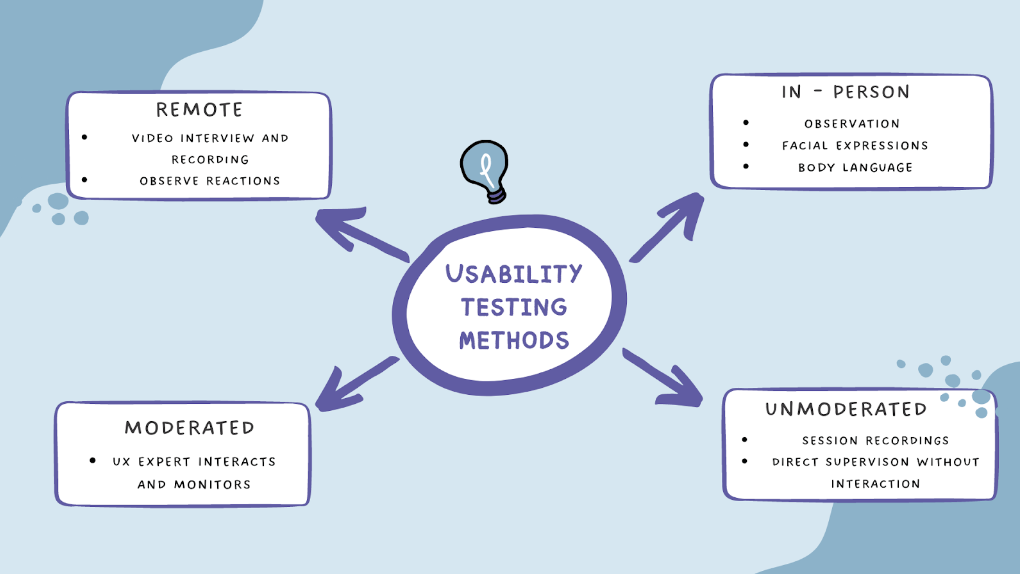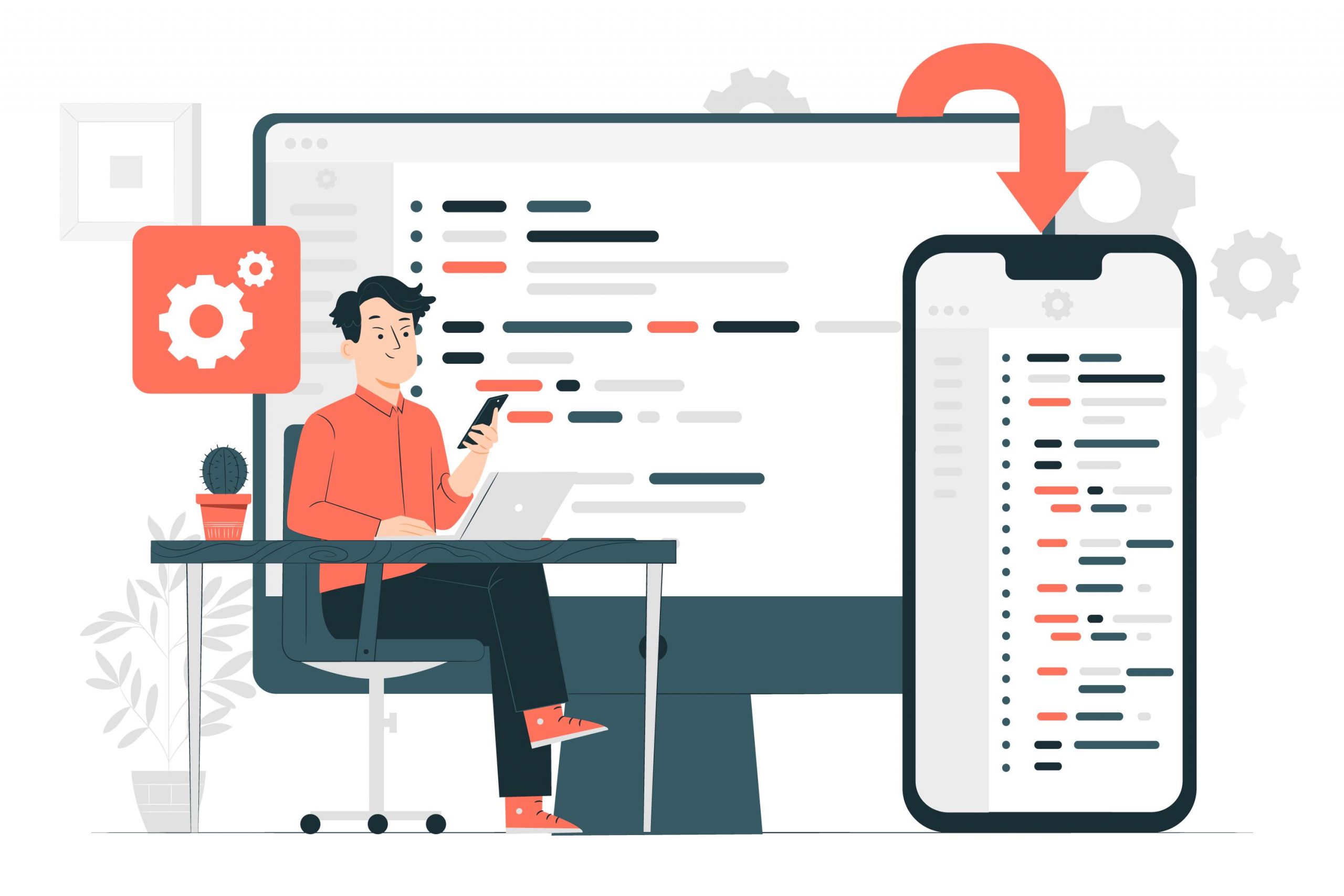Usability Testing:
With a group of representative users, usability testing examines how simple a product or an application is to use. It is all about getting real people to interact with a website, app, or product you’ve built and observe their behaviour and reactions to it. Observers will enumerate where users have succeeded or where they have struggled so that they can revisit their designs at a later date and make necessary improvements.
The goal of usability testing is to determine whether your design is intuitive and usable enough for users to achieve their objectives. Usability testing offers advantages that go beyond evaluating usability and functionality, though. More importantly, it enables you to fully encompass the use cases of your product, and your audience, and create a high-quality product.
What should one know, before initiating Usability Testing?
- The objective or intent of the research or the purpose of data collection
- Types of questions you need answers for ( or problem statements )
- The target Audience
- Detailed Rules and Guidelines defined
- Deliverables:
- Pilot (If necessary)
- Support (In case of any queries)
- Analysis
- Key takeaways
Usability Testing Methods:

- Remote:
The testing method in which the researcher or moderator and the participants are not present in the same location.
When can they be Chosen to do?
- When there are accessibility issues, where only a few participants can participate
- Incompatible schedule
- Participants can be widely dispersed, making travel challenging
Remote testing can be performed either using a moderated or an unmoderated approach.
- In-Person:
As the name implies, this is a testing method that requires the users to take the test in the presence of a UX researcher or a moderator.
When can they be Chosen to do?
-
- When the participants are available in the required location
- When the testing needs to be performed in a controlled environment with an unlimited number of people
Methods of in-person testing include:
- Contextual interviews: A typical contextual interview session combines traditional user interviews with direct observations of research participants while using a product or service in the pertinent environment.
- Eye tracking: Monitoring the participant’s eye movements to understand where they are looking and for how long, to visualise and track the participant’s attention.
- Focus groups: It is a method that assembles a small group of people to respond to a few questions in a controlled environment.
- Moderated:
A usability testing process requires the active participation of a facilitator or moderator to guide and walk the user through the testing process, which involves exploring the given product.
When can they be Chosen to do?
- When you want to ask real-time questions to an individual, to understand what the users think about your product
- When the test is technically tough or complex
- To observe the body language, tone, expressions, and understanding of an individual while exploring that particular product
- When there is sufficient time to gather the required details
Methods of moderated testing include:
- Concurrent Think Aloud (CTA): In this method, participants are asked to talk out their thoughts verbally when they are interacting with the product. This helps the moderator to understand the thoughts and feelings of the participants about the product.
- Retrospective Think Aloud (RTA): In this method, the participants execute their task in silence and record it simultaneously. Once the task is completed, the participant’s recording is played, and is asked to verbalise their thoughts to understand what they were thinking in order to evaluate the feedback. While the participant shares their thoughts, the eye moment is also observed to articulate more clearly.
- Concurrent Probing (CP): Here, the researchers will ask follow-up questions to the participants as they work on the task or say something interesting. Survey researchers frequently use this method during pretesting terms and wording, to measure how well people understand the questions and concepts.
- Retrospective Probing (RP): In this method, the participants are asked about their thoughts and deeds after the session is over. Researchers/Moderators record the participant’s actions or comments and ask questions once the session is over.
- Unmoderated:
A testing process that does not require any facilitator or moderator to guide the executions. The agenda is to understand how satisfied the users are with the interface and operation of the product. This is basically done using various tools.
When can they be Chosen to do?
- To get faster feedback, within a limited time frame
- To receive unbiased yet prompt feedback, in the absence of a Moderator
- Broad coverage of Geography
- Data received are combinations from different groups of people
- Cost-effectiveness
- Natural and real-time feedback
Methods of Unmoderated Testing:
- A/B Testing:
This type of testing is basically done to compare a product or feature of Product A with Product B. The intention of doing this is to make evidence-based decisions in marketing, design, and user experience of the product by avoiding risk.
Common elements for testing include headlines, forms, text, images, colours, buttons, layouts, CTA’S, and features.
- Click Testing:
Click testing is a fast and easy way to test and validate wireframes, designs, and prototypes for mobile websites, applications, or web pages.
These types of tests are usually done to understand the common click that users are performing on a webpage and why.
- Diary Study:
This type of testing is performed to collect information about the user experience of a product over a period of time. Participants will use the product for a long period of time and provide detailed feedback in a diary.
This is a quantitative research method, so the findings will be based on thoughts, feelings, and observable behaviour rather than numerical data.
- Card Sorting:
Card sorting is a research method in which participants group or sort individual labels written on cue cards according to criteria that make sense to them.
Example: When a single manufacturer has different models of 6 seater cars, how and why the user prefers to list them out on the website is something that can be decided based on this technique, to understand the user preferences.
- Tree Testing:
This method is performed by giving a list of features and asking users to map it under a particular category that makes sense to them.
This can usually be carried out after card sorting. It is called a “Tree” because it looks like a hierarchy with categories and subcategories.
Example: Mapping all the products in a supermarket to the categories and subcategories you feel fit in.
- Surveys:
A series of questions that are used to gather quick information about a participant’s attitude, preferences, sentiment, past experiences, or overall impression of a product.
- True Intent Study:
This possessive research is performed to understand the user’s objectives and perspectives on visiting a website.
Example:
- Why are they here?
- What are they trying to get done
- How was their experience?
- Qualitative:
Qualitative testing evaluates the data consisting of observational findings which indicates the ease of use of the product defined by the participants. The moderators will observe how users feel about the Ui of the product and where they struggle with respect to product design. The Think-aloud method is usually used here.
Product reviews, user feedback from usability testing, descriptions of problems encountered, facial expressions, preferences, etc. are a few examples of qualitative usability data.
This is usually preferred to be done with a minimum number of participants to keep it flexible based on the team’s needs.
- Quantitative:
Quantitative testing evaluates how well the users perform a particular task. This approach consists of statistical data which can be expressed in numerical terms and quantified. This information is presented as metrics such as how long it took to finish a task or what proportion of a group clicked a particular design element.
Completion rates, misclick rates, time spent, etc. are a few examples of quantitative usability data.
This is usually preferred to be done with a large number of participants, once the working product is available.
Note: Moderated testing method provides qualitative data, whereas unmoderated testing methods provide both quantitative and qualitative data.
What can you find out from Usability Testing?
- Can people use the product for critical use cases?
- How do users interact with the website/app? What are they thinking while using the website/app?
- How do users tackle their objectives? Is there anything that keeps users from accomplishing their objectives?
- Are they taking a completely different path from what you expected? Or do they take the right path but get lost along the way?
- To determine the revisions required to boost user satisfaction and performance
- Quantify how long it will take to complete the specified tasks
Few things that have to be taken care of, in Usability Testing:
- The objective of the activity and consistency
- Take into account the app, rather than the person’s abilities
- Submissions missing or incomplete and Valid data submissions
- Incompatibilities or technical limitations that prevent testing software from capturing the data you want to record (For example, Browser restrictions)
- Don’t direct the users on what to do. Watch as they adhere to the guidelines
Conclusion:
Usability testing is a significant way to improve the user experience of a product in a certain period of time. By using this, we can collect feedback from real users. This type of testing is essential to understand the user’s expectations and their interaction with the product. It’s critical to remember that usability testing is more than just a task to pass off the project schedule. There should be a purpose for testing, and then gathering the findings into practice.
In addition to making sure the changes you made were appropriate, doing this will also enable you to identify any new potential usability issues. Businesses have a better chance of developing a successful product when they meet the needs and expectations of their customers.







